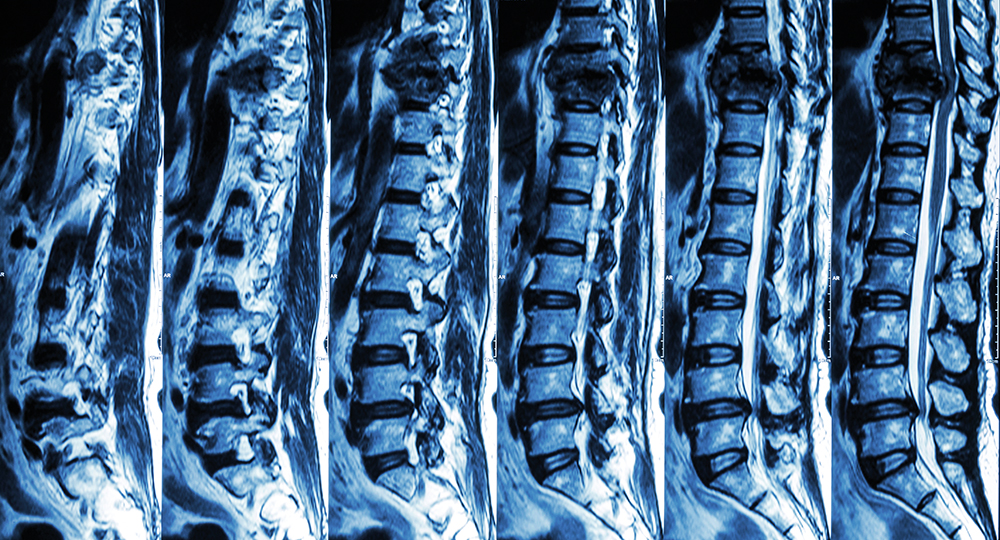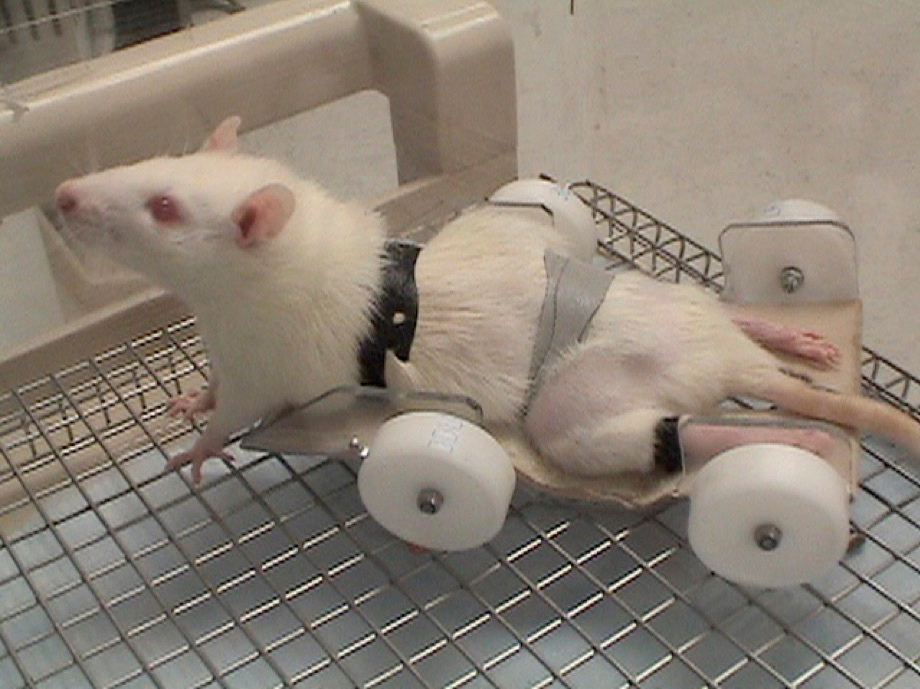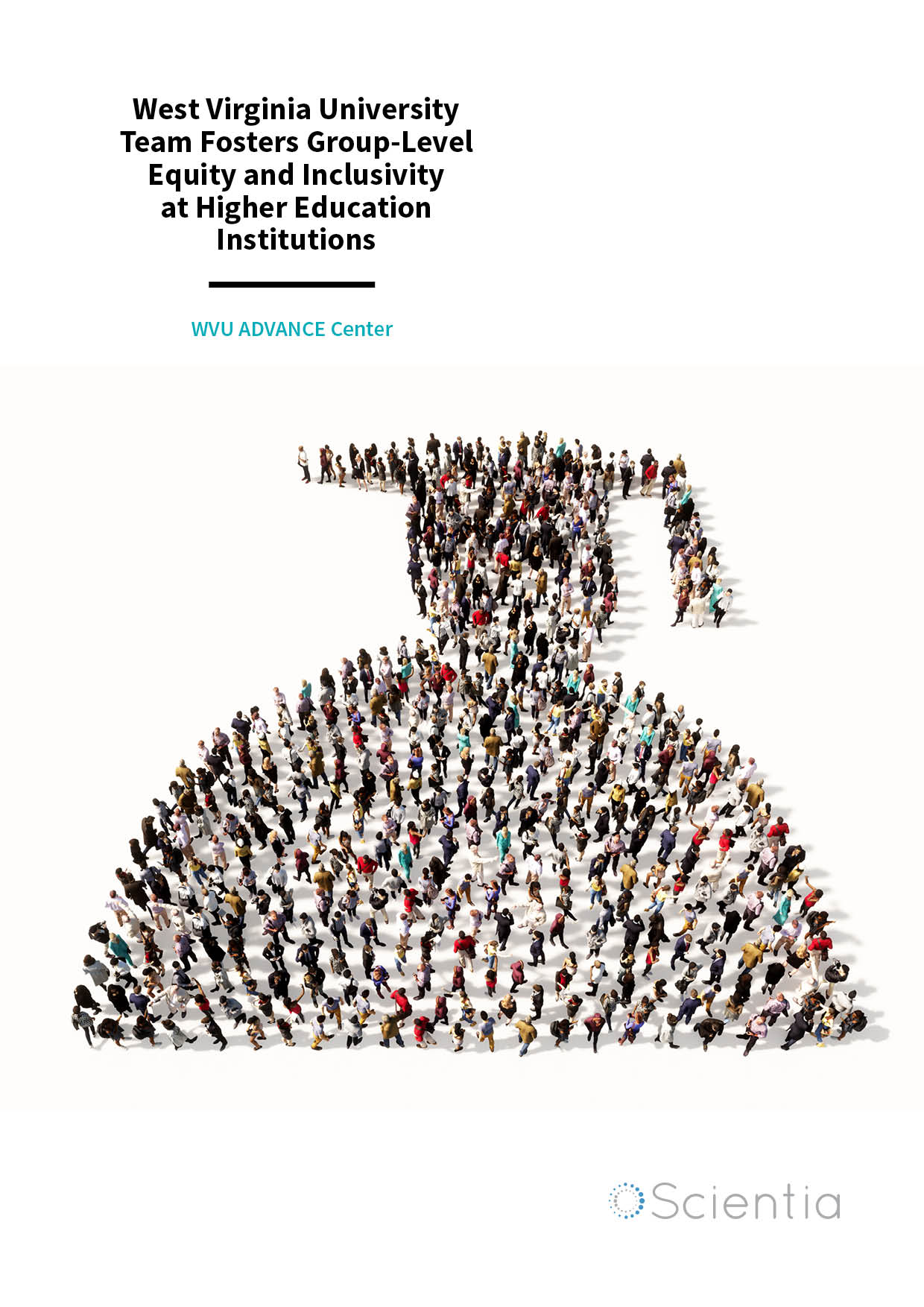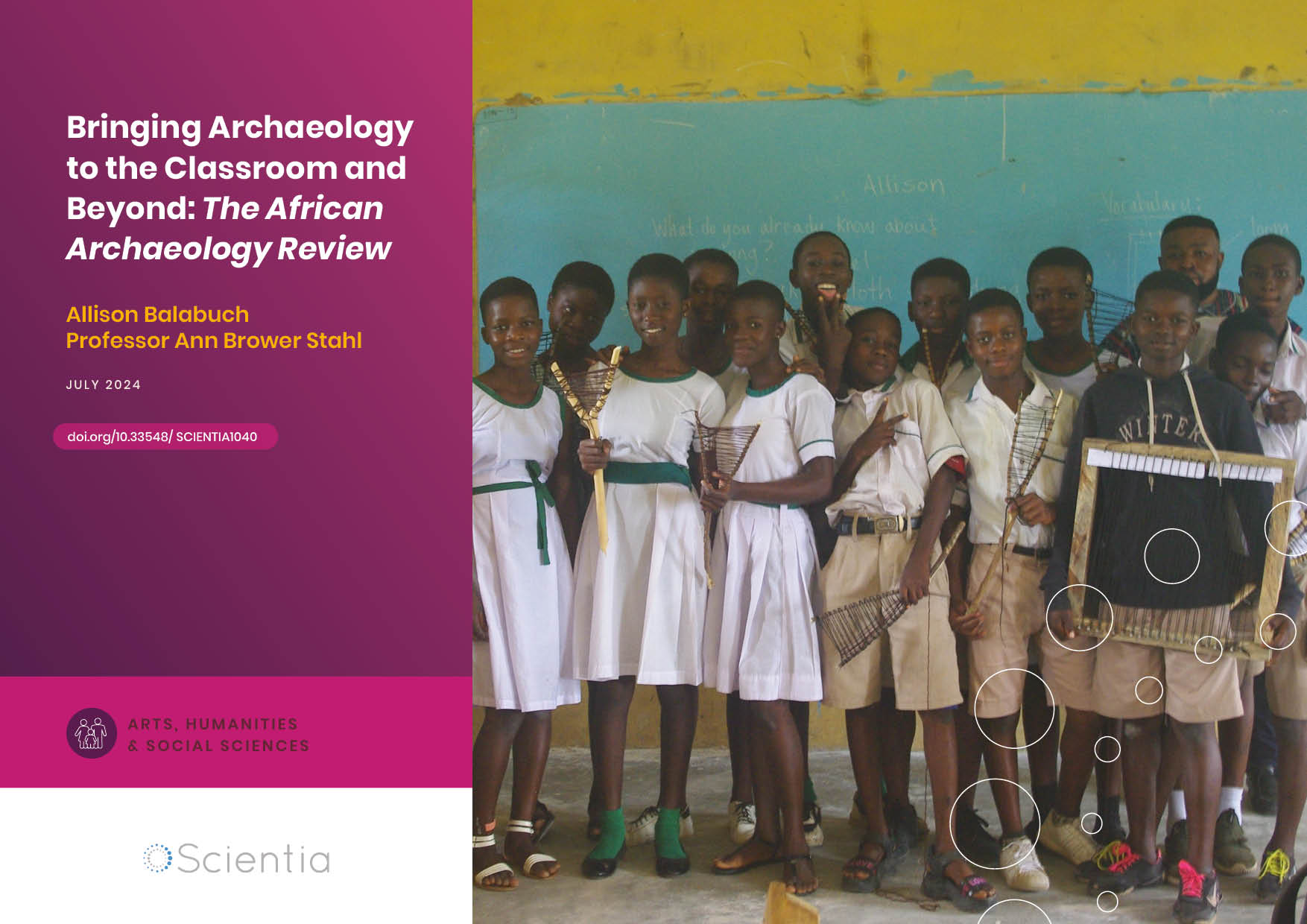Professor David Magnuson – Spinal Cord Injury and Recovery in Rats: Informing Human Rehabilitation
Professor David Magnuson, at the University of Louisville, Kentucky, describes himself as ‘a CPG guy’ and occasionally, more informally as ‘a rat guy!’ His work on the function of the central pattern generator (CPG) in the rat spinal cord following spinal cord injury, has produced both surprising and thought-provoking results. This research may ultimately challenge the established clinical beliefs and practices around the ways to best rehabilitate human patients with severe spinal cord injury.
The Impact of Spinal Cord Injury
Severe spinal cord injury (SCI) has dramatic life-changing implications, usually manifested as paralysis below the level of the spinal injury. The full or partial loss of motor or sensory function in the lower extremities is known as paraplegia (from the Ionic Greek ‘half-stricken’). The severity of SCI has been quantified by the American Spinal Injury Association, such that ASI Grade A represents the complete loss of sensory function and motor skills below the injury. This ranges to ASI Grade D, where more than half of the muscles below the level of injury can move against gravity.
The rehabilitation of SCI patients is often difficult and challenging for both the patient and those around them. Patients with severe SCI often become reliant on wheelchairs for their mobility, resulting in a lack of active loading and/or weight-bearing in the limbs, and this can lead to muscle wasting and chronic changes in the joints and their supporting structures.
At the same time, neurobiological changes within the spinal cord below the level of injury can lead to the development of spasticity and hypertonia, conditions in which muscles contract uncontrollably, develop tightness and can remain shortened (a resistance to stretching), which affects movement. Over time, this can result in contractures, the permanent tightening and stiffness of muscles, tendons, ligaments, or skin, which can dramatically decrease their range of movement. Critically, hypertonia and contractures/decreased range of motion can dramatically impede the activities of daily life for patients. Even simple things like sitting up in bed to dress, transferring from the bed to wheelchair, wheelchair to toilet, or wheelchair to car, become difficult if, for example, the range of motion at the hip decreases.
Physiotherapy and stretching remain one of the foremost treatments to prevent and treat muscle contractures and spasticity. Therapeutic stretching is known to be effective at reducing contractures following cast-immobilisation and is an essential component of flexibility training for healthy human subjects to improve movement range.

The Importance of Central Pattern Generators
Professor David Magnuson at the University of Louisville, Kentucky, runs an active research laboratory with five PhD students, a technician and laboratory manager, and several bioengineering co-op students. Although originally trained in neuropharmacology and neurophysiology, Professor Magnuson became interested in spinal cord injury after becoming good friends with a colleague living with SCI. He has come to believe that the spinal cord ‘has incredible computing power.’
Over the years, Professor Magnuson has focussed his research on the circuitry of the spinal cord and specifically on central pattern generators (CPGs), which are small and autonomous neural networks. CPGs create tightly-coupled patterns of neural activity that control rhythmic and routine locomotor behaviours such as walking, swimming, chewing and breathing, without constant input from the higher brain centres. Although acting subconsciously from the brain, CPGs are constantly modulated by afferent stimuli (neural activity being sent to the central nervous system and brain) from sensory neurons in the tissues (e.g., skin, joints and muscles), which respond to changes in the immediate environment. Effectively, the brain instructs the spinal cord to ‘act’, and the Spinal Cord then initiates ‘how’ to implement the action via the CPGs.
Professor Magnuson works with rats because they have demonstrated a strong ability to recover well after SCI rehabilitation, in ways not typically seen in humans. It was noticed that even in rats with severe SCI – that is, less than 10% spared white matter (communication across the injury) – locomotor movements could be rapidly recovered. For the past decade, Professor Magnuson’s laboratory has worked to understand why this is the case.
‘We are not currently maximising the function of existing tissue [remaining in the spinal cord] present after injury.’

In 2007–08, during experiments with rats with severe SCI, Professor Magnuson’s team were looking at the rats’ response to rehabilitation. When assessing the rats at 1-week post-SCI, they were placed on the ground and were observed to be effectively paraplegic and dragged their hindlimbs. However, the team were amazed to see that when the rats were placed in two inches of water (which provided 60% body weight support), they actively moved their hind limbs in a stepping motion. This ‘instant movement’ had not required weeks of rehabilitation or retraining of the body. Professor Magnuson stated that ‘it absolutely blew my mind, and in the Magnuson laboratory changed how we viewed this period of retraining [for SCIs].’
The implications were clear. Even after severe SCI, the rats retained sufficient spinal cord circuitry to control movement, independently of the brain. The team tested a shallow water training strategy for rehabilitation, but although they noted rats were more active when group-trained in shallow water, the activity did not improve over-ground stepping. This led the team to conclude that after SCI, the CPG was still working, although the rats did not have the ability for load-bearing and force (propulsion) generation.
In further experiments, it was noted that if shallow water training was delayed until 9 weeks after SCI, untrained rats could not step as well as trained rats in shallow water, suggesting there is a ‘window of opportunity for the CPG’ after which the spinal cord’s plasticity (the ability of the spinal cord and brain to continuously change and adapt after environmental transition or injury) was reduced. The team still wants to know why this occurred.

Rat Rehabilitation Leads to Unexpected Outcomes
In further experiments to test activity-based rehabilitation after SCI, rats were placed in ‘wheelchairs’ (four-wheeled trolleys) which enabled the rats to pull themselves around the cage with their forelimbs but immobilised their hind limbs. They found that being in a wheelchair worsened recovery and created a number of new problems in the rats, including pressure sores and a loss in the range of movement due to contracture. These are common problems in people that are rarely seen in rats. In an attempt to counter this and mimic human therapy, the rats then underwent stretching therapy. Despite its almost universal use for all patients with spinal cord injuries, stretching has not been studied systematically in animals and not widely studied in human patients.
The stretching protocol had two unexpected and surprising outcomes. Contractures were not prevented by the therapy in rats, and most significantly, the therapy caused a decrease in locomotor function. It should be noted that this decrease was not caused by damage to the muscles. The mechanisms behind this phenomenon are now beginning to be understood through the recent research coming out of Professor Magnuson’s laboratory.
The team postulated that ‘maladaptive plasticity’ may, to some degree, explain their observations. Maladapted plasticity relates to adaptations or changes to the neural system in response to inappropriate afferent signals which result in detrimental outcomes. Professor Magnuson discovered that the stretching protocol in rats stimulated the pain receptors (nociceptors), sensory nerve endings that respond to potentially damaging stimuli (heat, pressure, and so on), creating the sensation of pain if the brain deems the threat as credible. Following SCI, stretching stimulated the nociceptors and, in the absence of brain regulation, appeared to enhance maladaptive sprouting and the impact of C-fibre activation on the CPG circuitry.
To prove that it was the C-fibres that were disrupting locomotive function, the team injected capsaicin into 2-day old rats, which then grew up without the class of C-fibres that sense thermal and chemical pain. Following SCI and stretch therapy, these rats retained much more of their locomotor function. Interestingly, other researchers have also identified C-Fibres as playing a role in neuropathic pain syndromes that are common following SCIs. Maladaptive plasticity of the C-Fibre circuitry, in this case, resulted in the patient experiencing intense pain in response to innocuous stimuli such as a light touch, due to changes in their nerve activation threshold.

Implications for Human Recovery
In his unwavering belief in the ‘computational power’ of the spinal cord, Professor Magnuson’s research has led him to conclude that ‘we are not currently maximising the function of existing tissue [remaining in the spinal cord] present after injury.’ There are both positive and negative implications of this.
The improvements seen in rat models suggest that there are great opportunities for rehabilitation and mobility, even in severe cases of SCI. However, the findings also challenge the legitimacy of current therapeutic stretching therapy and will require very early intervention (at 1-week post-SCI in rats), which will be a challenge for the treatment of human patients.
A crucial aspect to Professor Magnuson’s argument is that activity, particularly in the early stages post-injury (the ‘window of opportunity’) is a critical factor in maintaining CPG function (as shown by the shallow-water stepping experiment). Conversely, sustained inactivity, through the immobilisation of the limbs (demonstrated by the rat wheelchair) inhibited future locomotor function. Added to this, stretching therapy applied to combat the effects of immobilisation appear to worsen outcomes by enhancing maladaptive plasticity.
Professor Magnuson is clear to explain that, to date, ‘we don’t yet have the evidence that what is true in rats works in humans’. The application of the findings in a human model holds many practical and ethical challenges. Rats, for example, are active 2 to 4 days post-SCI, but humans clearly require much longer periods of recovery, limiting opportunities for the beneficial ‘immediate activity’ which appears to be so helpful in rat rehabilitation. The challenge in human treatment will be utilising and maintaining the unforeseen capabilities of the CPG in a clinically acceptable way.
There are important potential avenues now to explore. Professor Magnuson believes that a greater understanding of the CPG circuitry will ultimately help to develop appropriate movement therapy that creates positive ‘adaptive’ plasticity during rehabilitation. Excitingly, it may even be possible to ‘reset’ the CPG system to re-open the window of opportunity for retraining the CPG at a later, chronic stage of recovery, significantly opening up the potential for successful intervention.
Reference
https://doi.org/10.33548/SCIENTIA683
Meet the researcher

Professor David Magnuson
Kentucky Spinal Cord Injury
Research Center
Louisville, KY
USA
Professor David Magnuson graduated with a PhD in Neuroscience in 1988 from the University of British Colombia. He then completed a postdoctoral research fellowship in pharmacology at University College, London between 1988–1990, and a postdoctoral research fellowship in physiology at the University of Ottawa between 1990–1992. Between 1992–1995, he was an Assistant Professor in the Department of Physiology, University of Manitoba, and then moved to his present position at the University of Louisville, Kentucky. Between 2000–2010 he was an Associate Professor in the Departments of Neurological Surgery, Anatomical Sciences and Neurobiology, before taking up his current position as Professor, holding an Endowed Chair in Neurological Surgery. Over the past years, Professor Magnuson’s research has focused on spinal cord circuitry, the central pattern generator for locomotion, activity-based rehabilitation and cardiovascular/vascular function in rat models of spinal cord injury. He has published extensively in this field.
CONTACT
E: david.magnuson@louisville.edu
W: https://louisville.edu/kscirc/basic-research/faculty-1/david-magnuson
Twitter: @KY1Mag
KEY COLLABORATORS
Scott R. Whittemore, PhD, University of Louisville
Jeffrey C. Petruska, PhD, University of Louisville
Simon Danner, PhD, Drexel University
Ilya Rybak, PhD, Drexel University
CURRENT FUNDING
National Institutes of Health/NINDS
Department of Defense
The Kentucky Spinal Cord and Head Injury Research Trust
The Craig H. Neilsen Foundation
FURTHER READING
DSK Magnuson, WD Dietrich, Introduction to the Special Issue on Locomotor Rehabilitation after Spinal Cord Injury, Journal of Neurotrauma, 2017, 34(9), 1711–1712, doi:10.1089/neu.2017.5126.
KL Caudle, DA Atkinson, EH Brown, et al, Hindlimb stretching alters locomotor function after spinal cord injury in the adult rat, Neurorehabilitation and Neural Repair, 2015, 29(3), 268–277, doi:10.1177/1545968314543500.
AV Keller, C Hainline, K Rees, et al, Nociceptor-dependent locomotor dysfunction after clinically-modelled hindlimb muscle stretching in adult rats with spinal cord injury, Experimental Neurology, 318, 267–276, 2019.

Want to republish our articles?
We encourage all formats of sharing and republishing of our articles. Whether you want to host on your website, publication or blog, we welcome this. Find out more
Creative Commons Licence
(CC BY 4.0)
This work is licensed under a Creative Commons Attribution 4.0 International License. 
What does this mean?
Share: You can copy and redistribute the material in any medium or format
Adapt: You can change, and build upon the material for any purpose, even commercially.
Credit: You must give appropriate credit, provide a link to the license, and indicate if changes were made.
More articles you may like
Dr Ralf Adam | New Technologies Shaping the Future of Oral Hygiene
Understanding the efficiency of various toothbrush technologies is essential for achieving optimal oral health. Dr Ralf Adam, who leads a dedicated team at Procter & Gamble in Germany, is keen to investigate the complexities of these technologies. His team have provided new insights into the best toothbrush types for plaque removal and the maintenance of gum health. By highlighting the importance of informed oral care decisions and ongoing investigations, this vital research works towards ensuring everyone can achieve a brighter, healthier smile.
WVU ADVANCE Center | West Virginia University Team Fosters Group-Level Equity and Inclusivity at Higher Education Institutions
Despite ongoing efforts to broaden participation in the academy, many groups remain underrepresented. More needs to be done to ensure that all faculty and students succeed in institutions of higher education. The WVU ADVANCE Center is an academic hub at West Virginia University, which provides services, events, mentorship opportunities, and other initiatives that promote the sense of belonging that leads to thriving faculty and students.
Dr Olalla Castro-Alvaredo | Measuring Entanglement: Symmetry-Resolved Entropy
Dr Olalla Castro-Alvaredo of the City University of London (UK) and her collaborators are advancing our understanding of an important phenomenon of quantum mechanical systems known as entanglement and, especially, its mathematical measures. Symmetry-resolved entanglement entropy is one such measure. Their study focuses on special quantum states which are excited with respect to a ground state. The research shows how the entanglement amongst quantum particles can be measured and assesses the contribution to the entanglement of quasiparticle excitations, particularly in the presence of additional symmetries.
Allison Balabuch – Professor Ann Brower Stahl | Bringing Archaeology to the Classroom and Beyond: The African Archaeology Review
The African Archaeology Review (AAR) journal recently celebrated its 40th anniversary. To mark this occasion, a special issue was compiled with an innovative theme: Archaeology for Education. To achieve this, the AAR editorial team assembled a group of academic researchers in archaeology with the proposition of writing articles collaboratively with educators that would make their research centred on Africa’s rich pasts accessible for use in school learning. The goal is to change the stories we tell about Africa both within and outside the continent.




